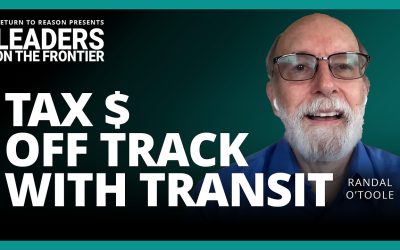 Executive Summary
Executive Summary
Canada’s inter-city bus industry is in flux. Rural service levels have declined over the last few decades, and provinces are exploring various ways to maintain rural routes. Meanwhile, curbside inter-city busing is beginning to take hold in the Niagara Falls-Montreal corridor. While rural intercity bus demand is decreasing, the urban inter-city bus market appears primed for growth. However, many provinces have relied upon on a system of cross-subsidies whereby Greyhound is required to provide service to unprofitable rural routes in exchange for exclusive access to profitable urban routes. This effectively subsidizes low-income rural riders by charging higher fees to low-income urban riders. However, this model is breaking down. In the last few years, Greyhound has demanded subsidization to continue some of these routes, but it is now being allowed to exit certain markets instead. This creates an opportunity for provinces to design better models for providing service to underserved rural areas. Fortunately, some U.S. states have provided examples that the provinces can build upon.
Inter-city bus ridership in the United States has increased dramatically since 2002. This growth is almost entirely due to curbside buses that travel from downtown to downtown between major cities, picking up customers at designated roadside stops (as opposed to at stations). While rural ridership levels continue to dwindle throughout the country, states such as Washington State have found ways to maintain socially necessary routes at a reasonable cost. Washington State’s model would be appropriate for Manitoba, Saskatchewan and the Maritime provinces, which are in need of affordable rural service.
Below are the recommendations of the report:
• Provinces should deregulate prices and schedules for inter-city buses.
• Provinces should require no more than 90 days notice from carriers for route abandonment or service interruptions.
• If provinces choose to have any entry restrictions, they should at most have a reverse onus clause whereby the only way to prevent new carriers from entering a market is by demonstrating that it would be detrimental to the public interest.
• Socially necessary routes that carriers refuse to service at market rates should be tendered out on a competitive basis.
• The ideal method for tendering would be a reverse auction system, whereby carriers bid downwards on the required subsidy level until the lowest acceptable bid is submitted.
Introduction
The inter-city bus industry in the United States has grown dramatically since 2007. It had been in steady decline since the 60s, as automobile ownership increased and airline deregulation made airfare affordable to the middle class. More recently, however, a combination of competition and technology has allowed the rapid expansion of discount inter-city buses that are increasing attracting young professionals who would not typically have ridden them. The number of daily intercity bus departures has been increasing by roughly 7 per cent since 2007, making it the fastest growing mode of transportation in the United States.1 There is good reason to believe that the same trend will occur in Canada—if governments let it.
When discussing regulatory policy, the term “deregulation” tends to dominate the discussion. Unfortunately, the term is often used in a vague, misleading way. In transportation policy “deregulation” tends to refer to eliminating the regulation of fares, schedules, routes and tertiary services (meals, bundling deals, etc.). Opponents of liberalizing transportation policy often use the term “deregulation” to imply that all regulations, including safety regulations, would be eliminated. This is something that few supporters of liberalization would actually support. Since the term is inescapable, the word “deregulation” should be used as defined by transportation policy.
The Canadian inter-city bus industry is in flux. Since 2009, Greyhound has sought subsidies to continue providing service to uneconomical routes. The government of Alberta subsequently deregulated the industry, and the government of Manitoba is allowing Greyhound to reduce rural service. The only carrier servicing New Brunswick, Nova Scotia and PEI is ceasing operations in those provinces.2 The Ontario government has decided to abandon Ontario Northland, a money-losing Crown corporation that provided bus, train and telecommunication service in Northern Ontario.3 Saskatchewan, meanwhile, stands out as the one jurisdiction that is increasing subsidies to intercity busing.4
There appears to be a consensus in Canada (outside of Quebec and Saskatchewan) that reducing the level of regulation is the appropriate path for the industry.5 According to all available research from governments, academe, think-tanks and industry groups, good reasons exist for that consensus. Deregulation will lead to cheaper, more convenient and better quality bus service between urban areas.
While liberalization would bring cheaper, better bus service to urban residents, there is a legitimate concern that service would decline in many remote or rural areas under a deregulated system. This has been the U.S. experience. Of course, it has also occurred under the highly regulated Canadian system.6 The traditional approach has been to mandate that Greyhound provide service to moneylosing routes in exchange for a virtual monopoly on service. This cross-subsidization model relied on riders paying higher fares on profitable routes in order to keep fares lower on unprofitable routes, but Greyhound has abandoned many rural routes as rural populations have declined and automobile ownership has increased. There is reason to believe that deregulation combined with targeted subsidies would stabilize or increase rural service. The virtue of a deregulated system is that it allows companies to experiment with various business models that could make previously uneconomic routes viable. Moving away from cross-subsidization and toward direct subsidies for specific routes would also end the practice of requiring low-income urban riders to subsidize rural riders.
View study as PDF (31 Pages)


